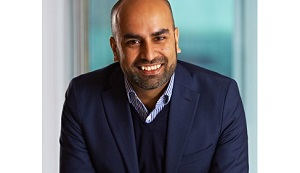With falling print ad revenues becoming more common, the rise of digital and native advertising formats has never been more important to publishers. Aly Nurmohamed, VP, Global Publisher Strategy at Criteo looks at why native advertising can provide content that is relevant, valuable and engaging for customers.
Take a look at the revenue figures for pretty much any print title in the UK, and the story will be roughly the same: freefalling print ad revenues, often (but not always) balanced by rising digital ad sales. Trinity Mirror – which publishes The Mirror newspaper – is just one example, having recently reported a year on year fall in print ad revenue of 21% in the third quarter of 2016, while digital display and transactional revenue grew 24%.
When The Independent newspaper’s print edition, launched in 1986, breathed its last at the end of March this year, owner-publisher Evgeny Lebedev said that journalism had “changed beyond recognition” and that the newspaper “must change too.” No one is in any doubt that this change has been precipitated by the huge shift in the way we consume content in the digital age.
Advertising is feeling this shift acutely, exemplified by this year’s increasingly heated debates around the rise of ad blocking. On one side, consumers are downloading ad blocking technology to prevent ads from intruding on their browsing experience (though numbers remain lower than media reports would have you believe); on the other, publishers and advertisers know that content must be paid for in some shape or form.
In recent months we’ve seen increasing numbers of online publishers employing various tactics to ‘fight back’ against the threat of ad blockers, including charging readers for access in exchange for keeping their ad blocker switched on (GQ), through to outright blocking access to those using the software (City A.M). The long-term effects of such strategies are yet to be seen.
On the other side of the coin, advertisers and publishers are turning to ‘native’ advertising formats to engage readers more effectively than display ads. According to the IAB, UK content and native advertising spend increased 29% to £451 million in the first half of this year – a trend borne out globally by various publishers starting to see greater share of ad revenues from native ads, including Forbes (35% of digital revenue) and Slate (nearly 50% of total revenue).
But what does ‘going native’ mean for advertisers right now?
The aim of native advertising is to remove the friction caused by intrusive ad formats like irrelevant and untargeted pop-ups, providing audiences instead with sponsored content that is valuable, engaging and relevant to them.
There are clear benefits of this approach to consumers, publishers and advertisers alike. For consumers, advertising becomes more useful and less interruptive. For publishers, revenue streams are maintained. For advertisers, audiences are more likely to actively engage with the brand. Perhaps most importantly, given the prevalence of smartphones, native is better suited to mobile than display; according to a study from Facebook and IHS, early two-thirds (63.2%) of all mobile display ads will be native by 2020.
Several large publishers are already investing in ways to give native ads more prevalence. When GQ relaunched its site this year, it made the decision that commercial content should appear in the same contexts (such as the front page, story stream and social media) as editorial content. The Independent is also keeping step with the trend, creating new roles for staff who will span both editorial and commercial responsibilities. But can publishers and advertisers really ‘go native’ in an authentic way?
Wil Harris, Head of Digital at GQ publisher Code Nast, thinks so. He believes that native content can be successful when it’s done right, commenting, “people only dislike native content when it’s crap, in the same way that they dislike any content that is crap.”
An increasing number of technology providers are now offering services to publishers to help them integrate native ads that look consistent with their website or mobile app. LinkedIn is already seeing significant chunks of revenue coming from native advertising formats, and the majority of Facebook’s ad revenue has long been considered native. This is making native advertising formats increasingly accessible to brands looking to engage consumers in more effective, and less intrusive, ways – which can only be a good thing for everybody.
The long term impact of decisions like the Independent’s – to foreground native revenue streams by combining editorial and commercial roles – remain to be seen. But I think we’ll all be going native very soon.
By Aly Nurmohamed
VP, Global Publisher Strategy
Criteo
